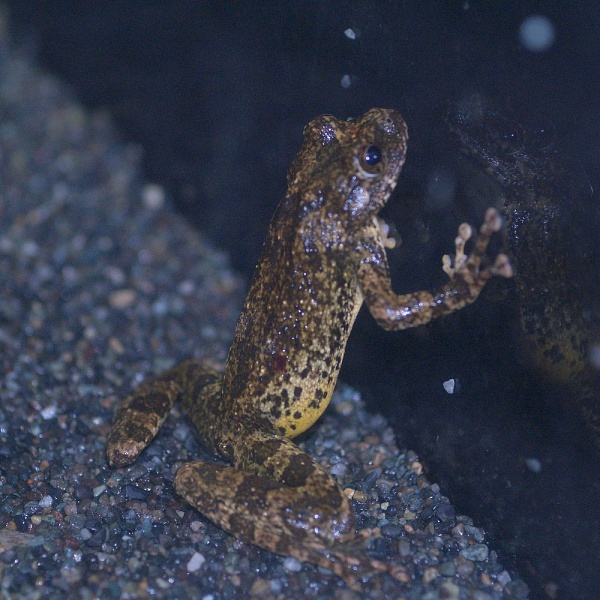Facts About Kajika frog
The Kajika frog, also known as Buerger's frog, is a fascinating species from the Rhacophoridae family. Native to Japan, these frogs are commonly found on the islands of Honshu, Kyushu, and Shikoku. Sadly, their habitats are increasingly threatened by dam construction and the development of concrete riverbanks.
In terms of physical appearance, female Kajika frogs are notably larger than the males. Males typically measure between 3.5 to 4.4 cm, while females range from 4.9 to 8.5 cm. Their flat bodies, grayish-brown coloration, and speckles allow them to blend seamlessly with rocky surroundings. A distinctive dark T-shaped mark between their eyes further characterizes them. Their skin color can also adapt slightly to better match their environment. Equipped with suction pads on their fingers and toes, Kajika frogs can firmly grip rocks even in strong currents. Their large mouths also feature suction pads to help them remain stationary.
Kajika frogs thrive in montane streams, lakes, and adjacent forests. Their diet primarily consists of insects and spiders, while their tadpoles consume algae. Male frogs are known for establishing territories on riverside rocks and producing mating calls that resemble a buck's cry. This unique call is the reason they are named "Kajika" which translates to "River Deer." During the mating season, from April to August, females lay approximately 500 eggs in water beneath rocks. These eggs, contained in sacs about 5 cm in diameter, hatch after roughly two weeks.
In Japanese culture, the Kajika frog's distinctive call has inspired many summer poems. People with melodious singing voices are sometimes affectionately referred to as "Kajika." Historically, during the Edo period, these frogs were even kept as pets, with specialized "Kajika cages" designed for their care.
